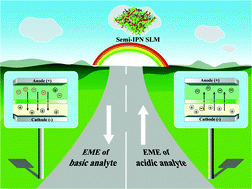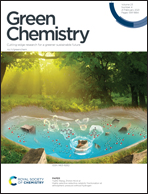Organic-solvent-free electromembrane extraction based on semi-interpenetrating polymer networks†
Abstract
In this work, a green, stable and versatile organic-solvent-free electromembrane extraction (EME) system based on semi-interpenetrating polymer networks (semi-IPN) is proposed for the extraction and enrichment of both basic and acidic drugs from human urine. Because of its non-toxicity and high affinity in target separation, semi-solid polypropylene glycol (PPG) was selected as a component for the synthesis of semi-IPN networks via an ultrasonic-assisted blending (UAB) method. Using the homogeneous semi-IPN membrane as the supported liquid membrane (SLM), the organic-solvent-free EME system was obtained. Under the optimized conditions, the organic-solvent-free EME system showed high recovery efficiency for both basic analytes (70–97%) and acidic analytes (86–100%). Moreover, the organic-solvent-free EME set-up could be reused in eight successive extraction batches without an obvious decrease in extraction efficiency. In addition, the EME system could be conveniently stored at ambient temperature for a long time, which will greatly promote the commercialization of EME. We believe this study provides new insights and attempts in the development of green sample preparation approaches.



 Please wait while we load your content...
Please wait while we load your content...